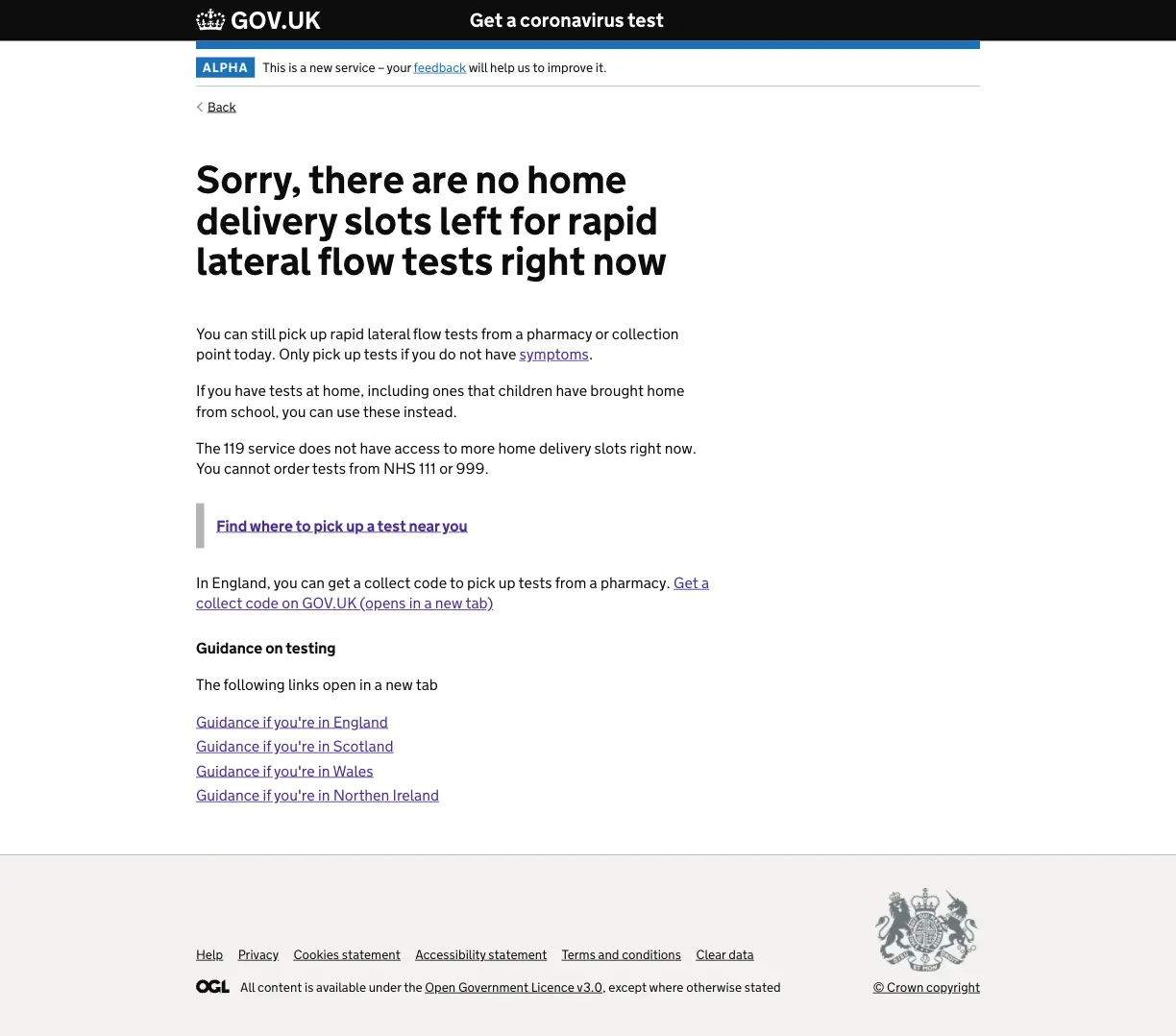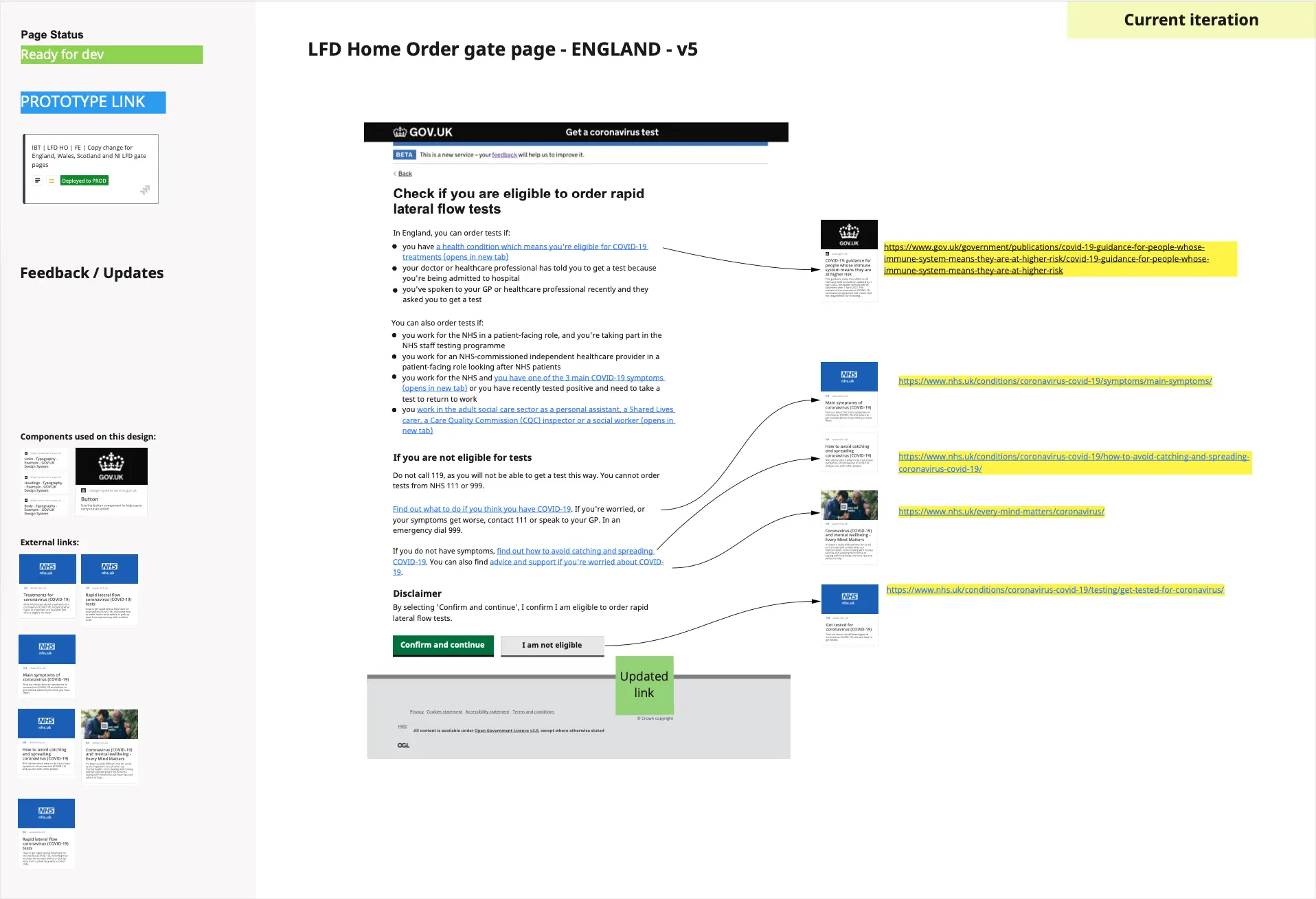
Test & Trace - Improving UX, saving lives
Supporting NHS Digital in working on the government's response to the coronavirus pandemic as a senior interaction designerWorking with NHS Digital to aid the government's response to the COVID-19 pandemic has been a source of personal pride. By enhancing policies and streamlining user experiences, we were able to facilitate the delivery of COVID-19 tests to those who required them most, thereby contributing to the collective efforts to combat the pandemic.
Amidst the COVID-19 pandemic, the government's policies were constantly evolving in response to the developing circumstances. This period was challenging for everyone involved, and it was essential to keep testing services current to ensure that those most vulnerable to the virus had access to testing.
As a senior interaction designer, I worked alongside a team of proficient user-centered designers to assist NHS Digital in adapting to the constantly changing policy landscape. Collaborating with numerous other experts, we contributed to the development of one of the government's most widely used services. Our efforts facilitated the distribution of COVID-19 tests to those who were most vulnerable, while also increasing public awareness and comprehension of government policies.
As a part of cross-disciplinary teams specialising in user-centered design, my role involved supporting the teams in responding to the ever-changing policy environment. In order to do so effectively, I needed to balance strategic considerations, user requirements, and technical limitations, and ensure that these diverse factors were integrated into designs that placed the user experience at the forefront.
The coronavirus-related content on the GOV.UK website garnered an average of 14 million weekly views. One of the pages, "Get a coronavirus test," was initially published on GOV.UK on April 30, 2020. Since its inception, the page has undergone several iterations and has amassed more than 91 million views as of April 2022.
While working alongside NHS Digital, I provided support for their response to the Omicron outbreak, as well as the subsequent discontinuation of universal testing for both lateral flow devices (LFDs) and polymerase chain reaction (PCR) tests.

Supporting COVID-19 Testing Services during the Omicron Outbreak
In 2021, the Omicron outbreak caused a significant increase in demand for COVID-19 testing services, resulting in test supply shortages and frequent policy changes. During this period, I collaborated with service and content designers to produce over 100 iterations of web pages, which were viewed by millions of users every day.
Working closely with a user-centered design team, we conducted an audit of user journeys to identify inconsistencies in messaging and determine necessary changes. Through workshops and sign-off meetings with stakeholders from various organizations, we ensured that users received accurate information at the right time. My knowledge of the GDS design system helped to maintain service standards, accessibility, and consistency across different services.
Our quick response to policy changes allowed the public to access relevant information and services, while also managing demand for tests to ensure that vulnerable individuals received necessary assistance.

Updating COVID-19 Testing Services in Response to Policy Changes
In March 2022, the UK government made the decision to discontinue the universal offer of free COVID-19 tests. As a result, we were required to update the service to implement new eligibility criteria and reduce access to free NHS tests.
My role as a member of the team was to support the policy changes for the PCR and LFD journeys. Our goal was to communicate the changes effectively while managing user expectations and concerns about the updates.
We reworked the user flow to ensure that users were directed to the appropriate content based on their devolved administration. By moving this question to the beginning of the journey, we reduced confusion and delivered only the relevant policy information for their location, rather than all four devolved administrations.
We were able to make sense of the shifting policies and provide valuable updates promptly. As policies became more stable, we improved the service routing to create clearer journeys and manage eligibility to ensure that tests were prioritised for those in greatest need.
Keeping the public safe and informed
Our team's focus on improving user journeys and ensuring up-to-date policy content made a valuable contribution to keeping the public informed and safe during the challenging times of the pandemic.
Through our efforts, we were able to deliver significant policy changes that helped:
- safeguard the clinically vulnerable
- maintain critical healthcare services
- positively shape the public's views on testing